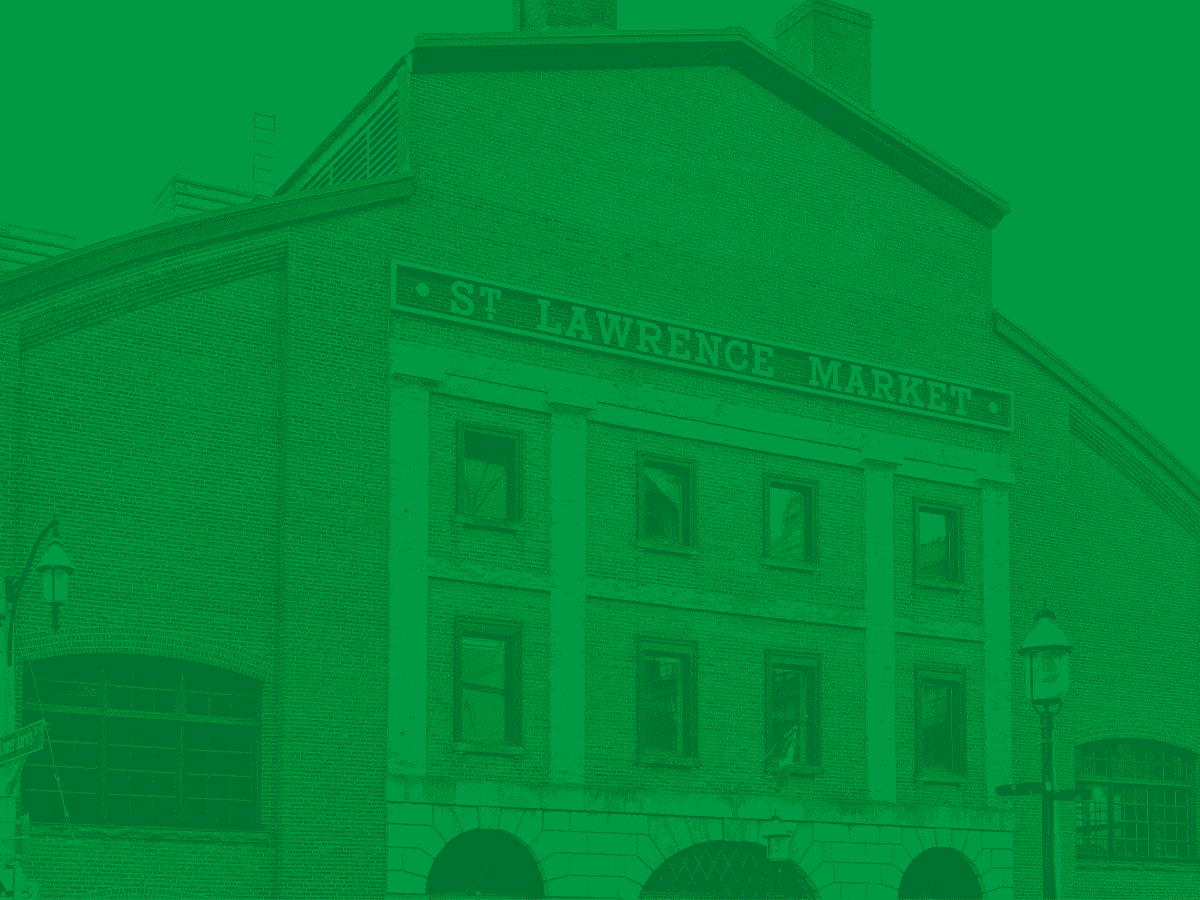Food for life: Cultivating, sustaining and transforming
The evolution of the St. Lawrence market and its role in public health
360 Degrees
The evolution of the St. Lawrence market and its role in public health

Archival images courtesy of the City of Toronto Archives:
Top left: City of Toronto Archives, Fonds 1478, Item 25
Top right: City of Toronto Archives, Fonds 1231, Item 612
Covered markets around the world provide a space to sell produce to the public and act as community hubs. Architectural science professor Leila Marie Farah at Toronto Metropolitan University (TMU) explores Toronto’s historic St. Lawrence Market and its role at the intersection of civic life and public health, including food safety.
Professor Farah’s recently published work offers an overview of how Toronto’s St. Lawrence Market has changed through 200-plus years of history and how its design was influenced by public health needs. Through research that includes regulations, historic bylaws, letters, autobiographies, diaries and even archaeological findings, she traces different iterations of the market from both an architectural perspective and by its relationships with civic life, health and food safety.
“Our understanding of food safety has evolved,” she said. This evolution can be seen in the introduction of technologies such as refrigeration, upgrades to the market buildings, and changes to rules and regulations throughout the decades that she explores in her research.
A Toronto landmark
The St. Lawrence market site was first dedicated for use as an uncovered public market in 1803. Later, in 1820, a modest building was constructed. This facility was quickly replaced, and a new Market House was built between 1831 and 1833. The market was a civic hub, hosting public gatherings, the first Toronto city hall, a newsroom and more.
Food and public health were critical early on, mainly due to the risks of displaying raw meat and the potential for disease. These concerns have impacted the market’s design throughout the years. The 1834 Public Market Act allowed the market to open six days a week and included regulations around butcher’s activities, cleanliness and fines for selling unwholesome products. There were inspections of products, stalls and storage spaces. In part due to the cholera epidemic in the early 1830s, people raised concerns about the new building, such as lack of ventilation, flooding and more.
After an 1849 fire impacted the northern side of Market House, it was demolished to make way for a new complex. The St. Lawrence Arcade, also known as the St. Lawrence Market, opened in 1851. This iteration of the market became one of Toronto’s main attractions during Christmas time. As the 20th century approached, a commission considered how to improve and expand the market. These modernization efforts included cold storage for perishables, improved ventilation, water facilities for fish stalls and more. Cold storage was particularly crucial, professor Farah notes, highlighting the important innovation that extended food’s lifespan.
By 1904, a new complex was complete with two buildings, including a wholesale market and cold storage added soon after. While grocery stores and chains became more popular in the early 20th century, the market endured. The opening of the Ontario Food Terminal in 1954 shifted Toronto’s wholesale food trade, and the market’s north building was demolished in the late 1960s, but a public campaign saved the south market structure, now an iconic Toronto landmark. The St. Lawrence Market may no longer be the city’s main destination for fresh produce, but it continues to be a year-round attraction. “It has remained anchored in the neighbourhood and keeps contributing to its character,” professor Farah writes in her chapter.
Mobs and Microbes
Professor Farah’s chapter on the St. Lawrence Market appears in the book Mobs and Microbes that she co-edited with University College Dublin professor Samantha L. Martin.
The research of the book’s contributors spans history from the 19th century to the modern day and covers 10 different cities on four continents, examining the vital roles markets play from past to present.
It has remained anchored in the neighbourhood and keeps contributing to its character.

This publication and professor Farah’s research were supported by TMU’s Faculty of Engineering and Architectural Science, the Department of Architectural Science, the University College Dublin’s Output-Based Research Support Scheme and the KU Leuven Fund for Fair Open Access.